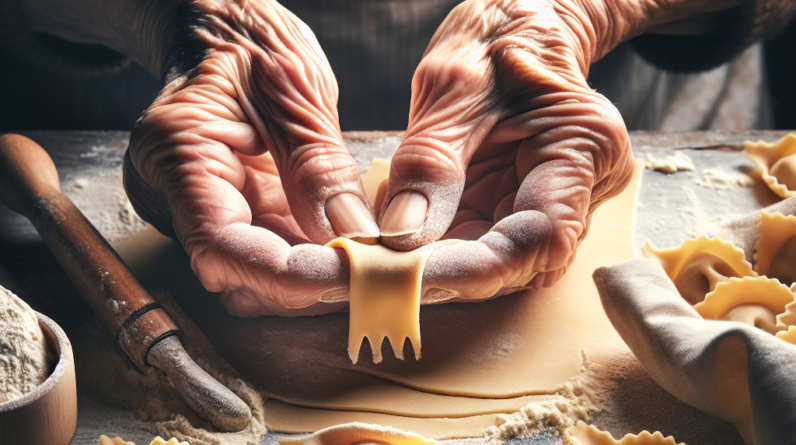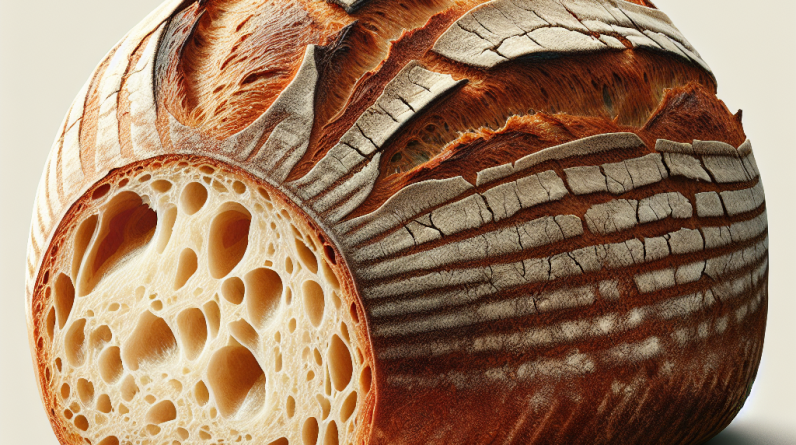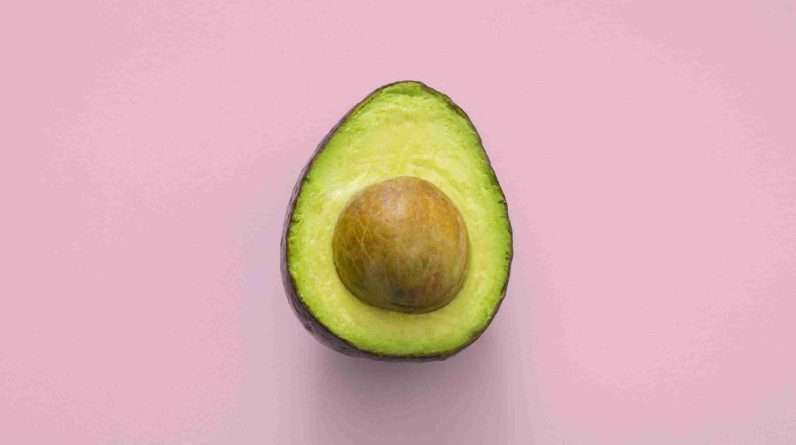Today, we are excited to share with you the delightful process of making a traditional Italian caponata with eggplant and a medley of other delicious vegetables. This vibrant dish is bursting with flavors that will transport your taste buds straight to the sun-kissed streets of Sicily. From the earthy eggplant to the tangy tomatoes, each ingredient comes together harmoniously to create a symphony of tastes and textures. So, put on your aprons and join us as we embark on this flavorful journey through the heart of Italian cuisine. Let’s get cooking!

Ingredients
To make a traditional Italian caponata, you will need the following ingredients:
Eggplant
Eggplant is the star of the caponata. Look for firm eggplants with smooth skin and no blemishes.
Onions
Onions add a savory flavor to the caponata. Both yellow and red onions work well.
Celery
Celery adds a refreshing crunch to the caponata. Make sure to remove any tough strings before using.
Tomatoes
Fresh tomatoes provide a juicy base for the caponata. Use ripe tomatoes for maximum flavor.
Tomato paste
Tomato paste adds depth and richness to the caponata. Look for a good quality tomato paste without any added sugars.
Olives
Olives add a salty and briny flavor to the caponata. Choose your favorite variety – green or black olives both work well.
Capcicum
Capsicum, also known as bell pepper, adds a sweet and vibrant taste to the caponata. You can use red, yellow, or green capsicum.
Raisins
Raisins provide a touch of sweetness and chewiness to the caponata. Soak them in warm water to plump them up before using.
Pine nuts
Pine nuts add a delicate nutty flavor and a bit of crunch to the caponata. Toast them lightly before incorporating them into the dish.
Capers
Capers, with their tangy and briny taste, lend a distinctive flavor to the caponata. Be sure to rinse them before using to remove excess salt.
Red wine vinegar
Red wine vinegar adds a zesty acidity to balance the flavors of the caponata. Use a good quality vinegar for the best results.
Sugar
A touch of sugar helps to balance the acidity of the tomatoes and red wine vinegar. Adjust the amount to your desired level of sweetness.
Extra virgin olive oil
Extra virgin olive oil is the key to giving the caponata its rich and luxurious texture. Use a high-quality olive oil for the best flavor.
Preparation
Before diving into the cooking process, it’s essential to prepare the ingredients properly.
Preparing the Eggplant
Start by removing the stems from the eggplants and slicing them into 1-inch cubes. Place the cubes in a colander and sprinkle them with salt. Let them sit for about 30 minutes, allowing the salt to draw out any bitterness. Rinse the eggplant cubes under cold water and pat them dry with a clean kitchen towel before using.
Chopping the Vegetables
Dice the onions, celery, tomatoes, and capsicum into small, evenly-sized pieces. This uniformity will ensure a consistent texture in the finished caponata.
Soaking the Raisins
Place the raisins in a small bowl and cover them with warm water. Let them soak for about 10-15 minutes until they plump up. Drain any excess water before adding them to the caponata.
Toasting the Pine Nuts
In a dry skillet over medium heat, toast the pine nuts until they turn golden brown and release their aromatic fragrance. Keep a close eye on them as they can burn quickly. Remove the pine nuts from the skillet and let them cool before using.
Cooking Process
Now that everything is prepped and ready to go, let’s dive into the cooking process!
Sweating the Eggplant
In a large skillet or frying pan, heat a few tablespoons of olive oil over medium heat. Add the eggplant cubes and cook them until they turn golden brown and start to soften. This process, known as “sweating,” helps to remove excess moisture from the eggplant. Transfer the cooked eggplant to a plate lined with paper towels to absorb any excess oil.
Cooking the Onions and Celery
In the same skillet, add a bit more olive oil if needed, and sauté the diced onions and celery until they become tender and translucent. This step allows their flavors to develop and adds a savory base to the caponata.
Adding the Tomatoes and Tomato Paste
Next, add the diced tomatoes to the skillet, along with the tomato paste. Stir well to combine, ensuring that the tomato paste evenly coats the vegetables. This mixture serves as the foundation of the caponata, providing a rich and tangy flavor.
Simmering the Caponata
Reduce the heat to low and let the mixture simmer for about 15-20 minutes. This allows the flavors to meld together and the excess liquid to evaporate, resulting in a thick and concentrated caponata.
Adding the Olives and Capers
Once the caponata has simmered to the desired consistency, add the olives, capers, and soaked raisins. Stir them into the mixture, allowing their flavors to blend harmoniously. Continue to cook for an additional 5 minutes to warm through.
Adjusting the Flavors
At this point, taste the caponata and adjust the seasonings according to your preference. You can add more salt, sugar, or red wine vinegar to balance the flavors. Remember to start with a little and gradually add more, as it’s easier to add than to remove.
Serving and Storing
With the caponata ready, it’s time to serve and enjoy this delightful Italian dish!
Serving Suggestions
Caponata is a versatile dish that can be served in various ways. It is most commonly enjoyed as an appetizer, either on its own or spread on crusty bread. You can also serve it as a side dish alongside grilled meats or seafood. For a heartier meal, toss the caponata with cooked pasta or use it as a topping for bruschetta. The possibilities are endless!
Storing the Caponata
If you have any leftovers, store the caponata in an airtight container in the refrigerator. It will keep well for up to 5 days. Before serving the leftovers, bring them to room temperature or gently reheat them in a skillet over low heat. The flavors will intensify over time, making the caponata even more delicious.
Tips and Variations
Here are some tips and variations to enhance your caponata-making experience:
Adding Other Vegetables
While the traditional caponata recipe calls for eggplant, onions, celery, tomatoes, and capsicum, you can get creative and add other vegetables. Zucchini, carrots, mushrooms, or even artichoke hearts can be great additions. Just make sure to adjust the cooking times accordingly.
Using Balsamic Vinegar
For a different flavor profile, consider replacing the red wine vinegar with balsamic vinegar. The rich and slightly sweet notes of balsamic vinegar pair beautifully with the caponata’s ingredients. Use it sparingly, as balsamic vinegar can be overpowering.
Adding Fresh Herbs
To add a burst of freshness, sprinkle some chopped fresh herbs over the finished caponata. Basil, parsley, or mint work exceptionally well and bring an extra layer of vibrancy to the dish. Garnish with the herbs just before serving to maintain the optimal flavor.
FAQ
Here are some frequently asked questions about making caponata:
Can I omit any of the ingredients?
Certainly! Caponata is a versatile dish, and you can customize it to your taste preferences. If there are specific ingredients you don’t enjoy or have on hand, feel free to omit them. The beauty of caponata lies in its adaptability.
Can I make caponata ahead of time?
Absolutely! In fact, caponata often tastes even better the next day as the flavors have time to meld together. Prepare the caponata as instructed and let it cool to room temperature. Transfer it to an airtight container and refrigerate overnight. Before serving, bring the caponata to room temperature or gently reheat it in a skillet over low heat.
Is caponata vegan-friendly?
Yes, caponata is typically vegan-friendly. It is a plant-based dish that contains no animal products. Just double-check the ingredient labels to ensure that all the components, such as the olives and tomato paste, are suitable for a vegan diet.
So now that you have all the information you need, go ahead and give this traditional Italian caponata a try. With its robust flavors and tantalizing combination of ingredients, it’s sure to become a favorite in your repertoire. Buon appetito!










